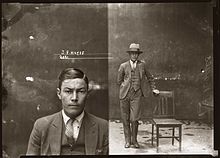My latest foray into a faction revolves around the Australian Post-master General's Department (PMG) and the Amalgamated Postal Workers' Union (APWU).
My intention was to create a small platoon of postal workers that I could use as an interesting faction either within a state's forces or
part of a militant group of workers. To this end I have painted 8 bases and a commander in 15mm using Eureka Miniatures WW1 British Infantry in Sinai wearing caps.
Australian Post-Master General's Department
The Australian Post-Master General's Department was headed by the Post-Master General, Sir Robert Archdale Parkhill (1878-1947) from October 1932 to October 1934. He was seceded by Alexander John McLachlan (1872–1956), a United Australia Party senator from South Australia.
Following federation in 1901, the colonial mail systems were merged into the Postmaster-General's Department (PMG). They were responsible for telegraph and domestic telephone operations as well as postal mail. An airmail service was introduced in 1914 and the licensing of wireless broadcasting services added in 1923.
Australia's first public radio station opened in Sydney on 23 November 1923 under the call sign 2SB with other stations in Melbourne, Brisbane, Adelaide, Perth and Hobart following.
A 1927 Royal Commission into wireless broadcasting came about from listener dis-satisfaction with the programming and coverage of the manufacturer/retailer driven services. In mid-1928, the Government established the National Broadcasting Service to provide the service and coverage the existing stations were unwilling to provide. This service was funded by a compulsory license fee, chargeable to all owners of radio receivers. As licenses for the larger (Class A) stations came up for renewal they were cancelled and reissued to the National Broadcasting Service - with their transmitters and studio equipment being purchased by the Government.
The Postmaster General's Department was given the responsibility of running the new service. To complement the license-fee funded Class A stations, a Class B Licence was established for privately run stations which would not have access to license-fee revenue but would be allowed to carry advertising and become the Commercial Stations we know today.
The first B Class Licences to Commence Service were 2UE (Electrical Utilities), Sydney on 26 January 1925, followed by 2HD (Mr H A Douglas), Newcastle on 27 January 1925, and 5DN (Mr E J Hume), Adelaide on 24 February 1925. Claims by 2BE (Burgin Electric Co) that they Commenced Service on the 7 November 1924 (the day their Licence was granted) is not supported by Archive records and a more realistic date would be after July 1925.
It became politically unsustainable for the PMG's to run the National Broadcasting Service, so on July 1, 1932 the Government established the Australian Broadcasting Commission (ABC) to run the National Broadcasting Service.
Amalgamated Postal Workers' Union (APWU)
In 1912 two separate unions were registered to covered postal workers. They were the Australian Letter Carriers' Association and the Australian Telegraph, Telephone Construction & Maintenance Union (later known as the Australian Postal Linesmen Union of Australia). In 1913 the Postal Sorters' Union of Australia was formed. The Australian Letter Carriers' Association changed its name to the Commonwealth Public Service Fourth Division Employees' Union of Australia.
In 1925 the three unions amalgamated to form the Amalgamated Postal Linesmen Sorters' & Letter Carriers' Union of Australia. It changed it's name in 1926 to the Amalgamated Postal Workers' Union (APWU).
The APWU covered postmen, sorters and linesmen. Front line workers, essentially postal clerks and telegraphists were covered by the Australian Third Division Telegraphists & Postal Clerks Union.
I have added some period photos to our Very British Civil Forum War Room
Link to the VBCF




